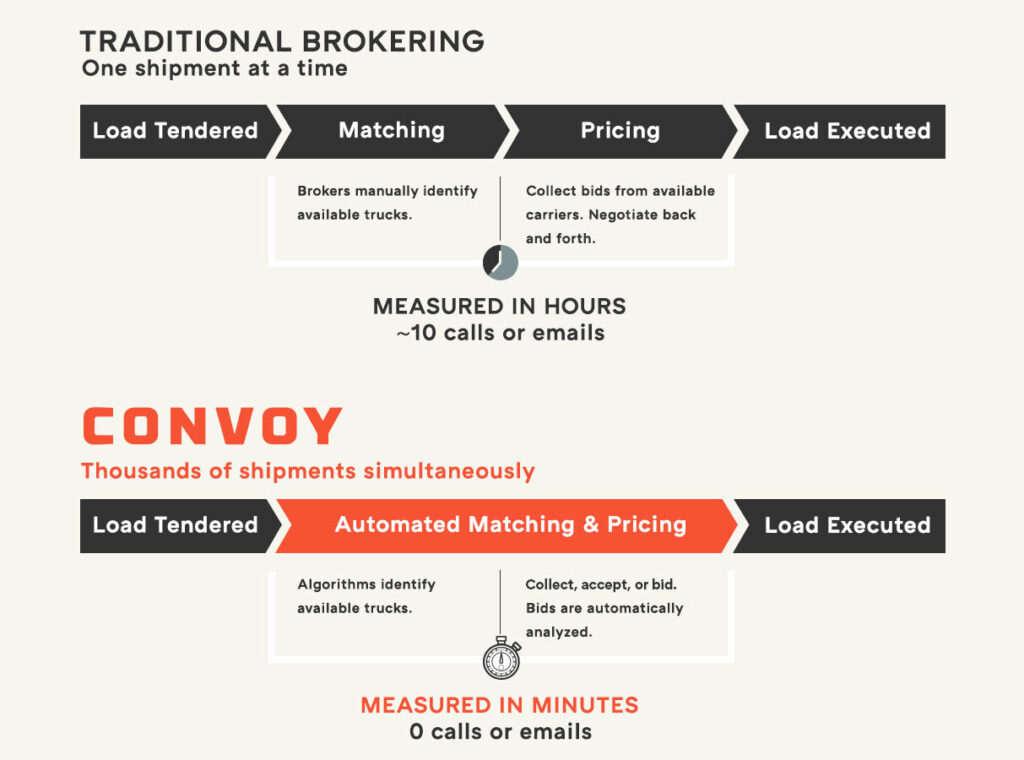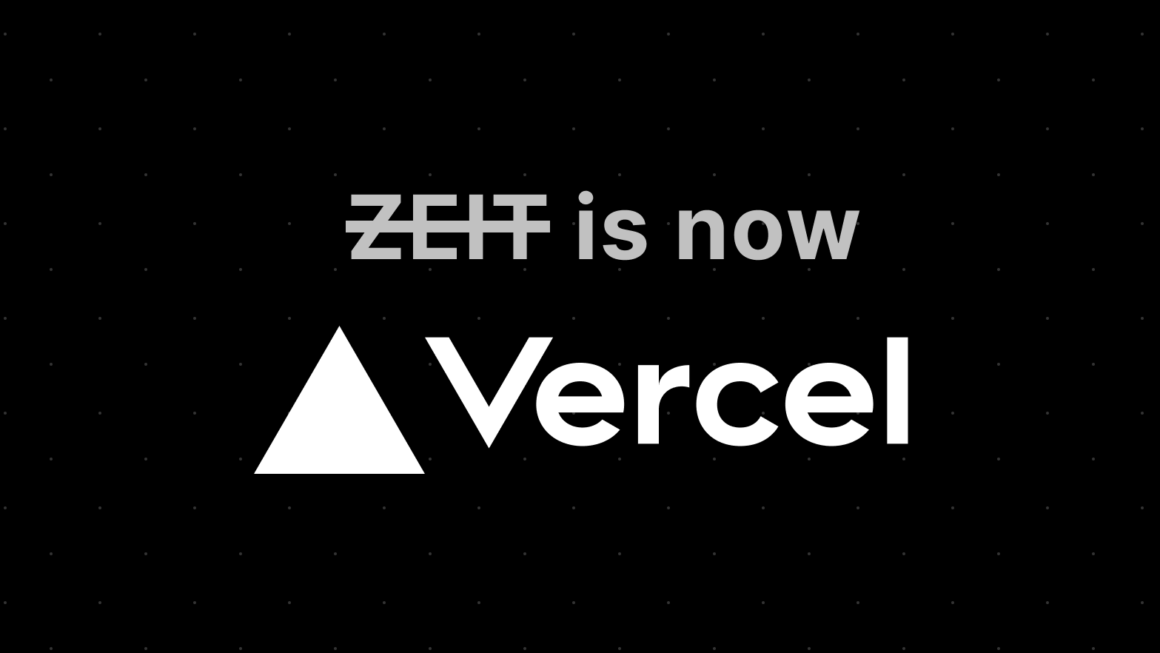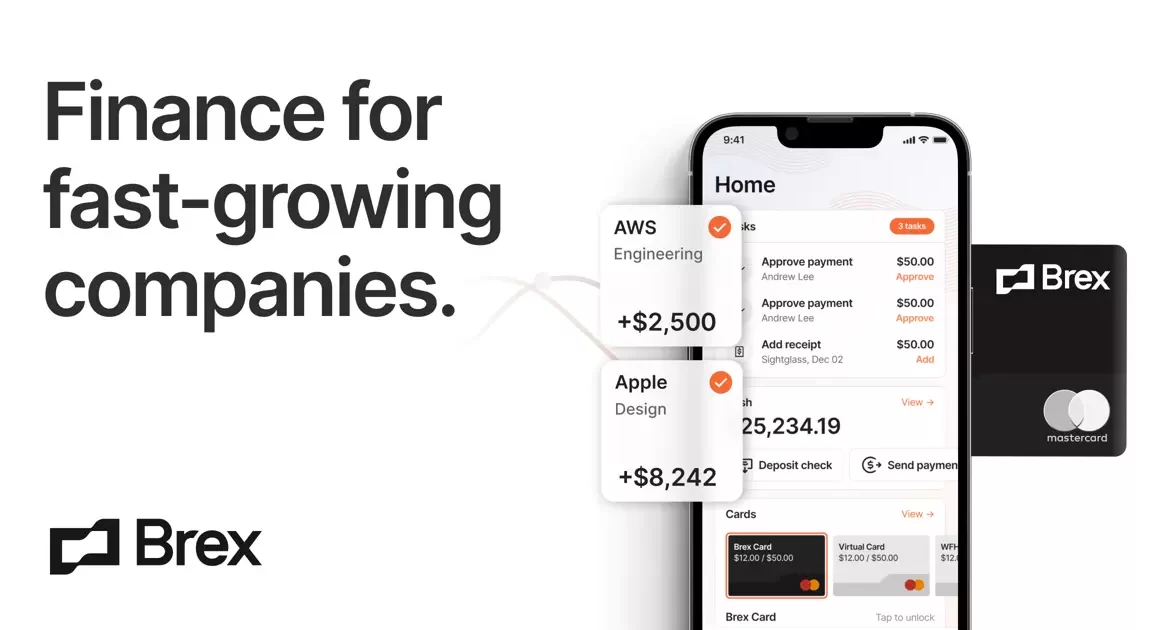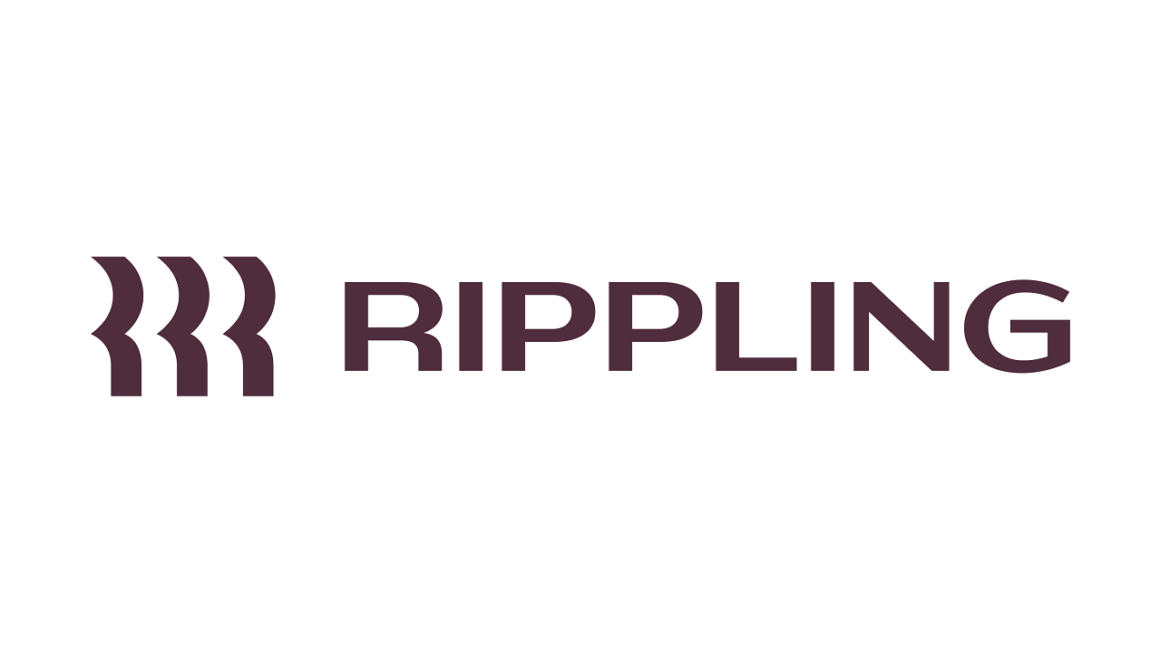Convoy is a freight brokerage platform that connects shippers (who need to carry goods) with carriers who have available loads. Unlike conventional freight brokers, who still rely on human methods (such as phone, email, or faxes), Convoy uses software to link shippers and carriers.
The business model of Convoy is based on the brokerage fees it collects from the shippers. Fees are being paid whenever a shipment is successfully executed by a chosen carrier. Additionally, Convoy runs a small e-commerce store selling trucking gear.
So far, the model has shown to be effective. On its platform, the firm has approximately 35,000 trucking companies and 500 shippers. Convoy’s value has risen to $2.75 billion, with annual revenues topping $300 million in 2018.
History of Convoy – Early Days and Founders
Dan Lewis (CEO) and Grant Goodale created Convoy in 2015. (CTO). Lewis has previously held jobs in technology and logistics spanning from supply chain consulting at Oliver Wyman to product management at Amazon. Lewis first met his co-founder Goodale while they were both working at Amazon. Goodale has tried his hand at entrepreneurship, co-founding and managing a game development business.
Lewis was in charge of developing new concepts and features at Amazon. He told in an interview that he was given a few of months to prepare a 5 to 6 page document, sell it to executives, and then acquire finance for his ideas. He used the same mindset to launch Convoy while still working at Amazon. Lewis persuaded a group of old colleagues (one of them was Goodale), and they began working on many concepts with a group of 4 to 5 individuals.
Convoy was the only idea that lingered. Convoy was also able to collect $2.5 million in seed funding from angel investors like as Jeff Bezos, Marc Benioff, and Drew Houston because to his extensive professional network.
Convoy went live in October 2015, concurrent with the funding announcement. Since then, the business hasn’t looked back. Over the course of four years, the firm has grown to over 1,000 people. It works with companies like Unilever and P&G. They also onboarded over 35,000 trucking businesses (together with around 100,000 drivers) and 500 shippers.
How Convoy Works – Business Model?
Convoy has built a smartphone application to link shippers (those who wish to transport cargo) with carriers that have available capacity. The app’s mechanics, which are accessible on both iOS and Android, are quite similar to Uber (thus why Convoy is sometimes referred to as the Uber of trucks).
In the case of Convoy, a shipper (such as Unilever or P&G) will desire to transport his or her products from point A to point B. He then launches the Convoy app and uploads his contribution. Shipment dates, the sort of products to be sent, their measurements (i.e. height, breadth, length, weight), the pick-up location and destination, and the price are all included in the information. This process adds to the supply side of Convoy’s marketplace.
The carriers then go out and seek for available cargoes that meet their specifications. These carriers frequently have previously completed an order from one of their broker connections and hence have available capacity on their way back. Once a cargo has been identified, carriers can begin to bid on it. When they receive the job and deliver the freight, they must submit a bill of lading (or BOL) to certify successful delivery and begin the payment process.
Truck drivers can opt to be paid directly by Convoy or through a factoring business of their choice.

How does Convoy Makes Money?
Convoy has two primary modes of income, being the brokerage fee as well as its e-commerce shop.
Freight Brokerage
Convoy is a marketplace that links suppliers (in this case, shippers) with consumers that are interested (carriers, i.e. trucking companies).
In the traditional freight brokerage business, a shipper contracts the broker to organize a shipment on his/her behalf. The broker then gets paid by the shipper while trying to find a carrier to execute the shipment. The broker then hires a carrier (normally a trucking company) to execute the shipment on the broker’s behalf. To turn a profit, the carrier gets paid less than the original price (paid from the shipper to the broker).
In this process chain, Convoy obtains the role of the broker. While traditional freight brokers charge commissions of 20 to 30 percent, Convoy is able to provide this service at a fracture of that price.
E-Commerce Store
In addition to the brokerage business, which accounts for the great bulk of Convoy’s earnings, they also operate a modest e-commerce store on their own website.
The business mostly sells trucker-related fashion products such as t-shirts, trucker hats, drinking bottles, and…. a bandana and coat for your favorite dog.
Also Read: FedEx – The Creation Of Logistics Empire
Convoy Funding, Valuation, Revenue, And Potential IPO
Convoy has raised $260 million in additional capital to expand efforts that would propel the transportation tech sector forward in 2021.
The current round of funding for the Seattle-based business consists of two components: a $160 million Series E equity investment led by Baillie Gifford and T. Rowe Price, which raises Convoy’s valuation to $3.8 billion, and a $100 million venture-debt investment from Hercules Capital. J.P. Morgan also extended Convoy a fresh $150 million line of credit.
Future of Convoy
According to the firm, Convoy is on target to make more than $1 billion in sales this year. Since the firm grows, an IPO may be in the works, as B2B enterprises can frequently go further on the public market, in part because partners want to know whether the company they’re dealing with has been vetted and is in it for the long haul.
Company’s website – https://convoy.com/
To read more content like this, subscribe to our newsletter



